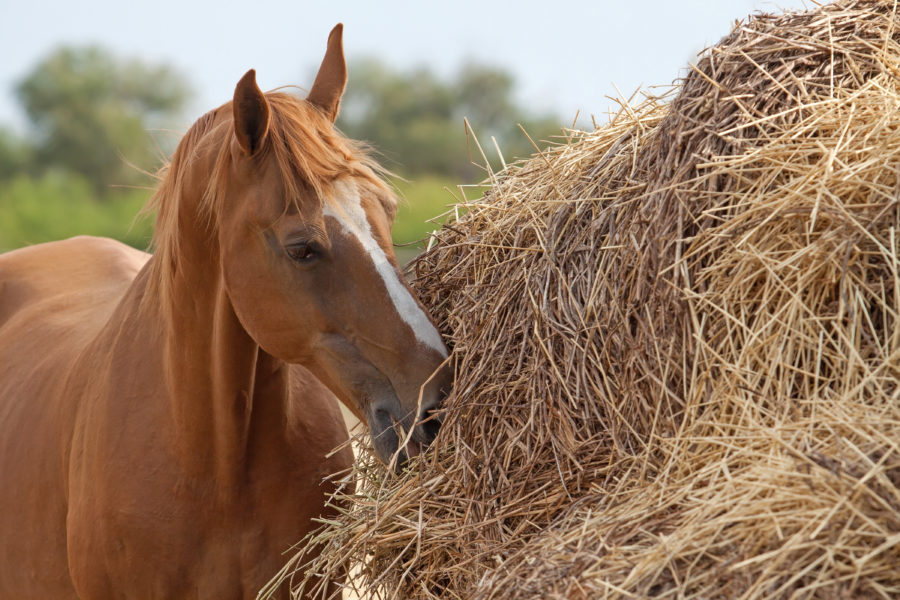Newly-released three-year study cites steaming hay as a critical step to preventing Inflammatory Airway Disease (IAD), a stealth equine ailment that affects nearly 90% of horses.
Inflammatory Airway Disease (IAD) affects an estimated 80-plus percent of the regular horse population, yet it often eludes diagnosis. IAD can be asymptomatic, or when symptoms are present (an occasional cough or runny nose) they can be easily dismissed or ascribed to a minor cold or allergy.
Horse owners should take their horse’s respiratory health quite seriously and ask their vet about IAD in cases of otherwise unexplained poor performance or decreased willingness to work, even when no cough or nasal discharge is present. Although it often escapes a layperson’s suspicion, compromised respiratory function is a major cause of poor performance in equine athletes. The equine respiratory system is delicate and vulnerable to injury from microscopic phorses, so protecting it is paramount.
Opportunities for prevention increased significantly with the recent discovery of a clear correlation between fungi in the respiratory system and high incidences of IAD. The link was detected in a three-year study1 published in The Journal of Internal Veterinary Medicine. The study also expanded on previous findings investigating how frequently IAD is found in the active sport horse population.
“This paper highlights a major piece of the puzzle of equine airway diseases: the role of fungi,” explains Dr. Van Erck-Westergren, one of the equine sports medicine veterinarians conducting the research. “In human medicine, fungi are known to cause many respiratory inflammatory conditions such as allergies, infection, asthma, etc. In equine veterinary medicine, we can find publications that relate the role of fungi in pretty nasty, potentially life-threatening diseases such as fungal pneumonia or guttural pouch mycosis, but barely anything else. Our paper shows for the first time that ubiquitous molds, including fungi, cause chronic lower airway inflammation which is deleterious for the health and performance of our horses.”
Environmental solutions
“Environmental management is the only way to protect your horse against fungi,” explained Dr. Van Erck-Westergren in a follow-up interview. “Fungi are everywhere – in the straw, in the hay and in the stall and storage areas. Their aim is to proliferate. There is now overwhelming evidence for the effectiveness of Haygain steamed hay in reducing IAD and helping to improve respiratory health in horses,” she continued.
In the study, horses fed Haygain’s steamed hay were 65% less likely to develop IAD than those fed dry hay. Along with many inhalable irritants, fungi are present in even top-quality hay. Haygain’s high temperature hay steaming kills fungi, hence its effectiveness in preventing IAD.
Regular stall disinfection, dust-free shavings and a sealed flooring system that requires minimal bedding, like ComfortStall, were additional recommendations for keeping fungi at bay, preventing Inflammatory Airway Disease and maintaining overall respiratory health. Along with dry hay, straw bedding had a high correlation to IAD incidence. Dry hay and straw bedding “cannot be recommended in performance horses,” Dr. Van Erck-Westergren states.
1 Dauvillier J, Woort F, Van Erck‐Westergren E. Fungi in Respiratory Samples of Horses with Inflammatory Airway Disease. The Journal of Internal Veterinary Medicine. 2018.








